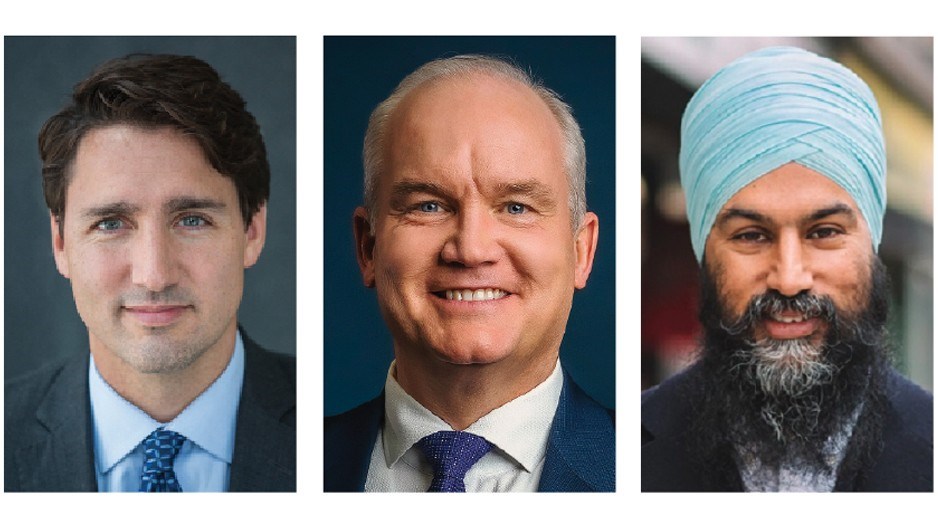In the first part of the “exit poll” conducted by Research Co. and Glacier Media, almost half of Canadians who voted (48%) told us that they would be “upset” under this scenario.
When the election was called, the Liberal Party held a significant advantage over its rivals. The democratic process did not result in the majority government that many Liberal supporters expected, after looking back at the provincial success of other parties that summoned voters to cast ballots during the COVID-19 pandemic.
There have already been calls – purportedly validated by polling data from entities that were nowhere to be seen during the campaign itself – for Trudeau to step aside and let someone else take over the Liberal Party before the next election takes place. Some may be ready to begin writing the obituary of a prime minister who has finished in second place in the popular vote twice in a row.
This knee-jerk reaction fails to consider many factors. In our “exit poll,” 32% of Liberal voters say their main motivator for casting a ballot was the party’s leader. For Conservative and New Democratic supporters, the proportion is lower (25% each). Right now, there is no guarantee that someone else would do better. In fact, when we asked Canadian voters about their behaviour if the governing party had been led by Chrystia Freeland or Mark Carney, the numbers are lower, with 29% and 22% of Canadians respectively saying they would have voted Liberal. Neither of these proportions would land the governing party in “minority government” territory.
In spite of the evident dislike that he evokes among some components of the Canadian electorate, Trudeau continues to possess the appeal that brought back the Liberal Party from a dismal performance in 2011 under Michael Ignatieff (19% of the vote nationally). A decade later, the combination of party and leader was enough to make the Liberals win at least two urban seats where candidates who were clearly not adequately vetted wound up in the news for all the wrong reasons.
The Conservative Party finds itself with no credible challengers in the event Erin O’Toole is compelled to step aside. Rumours of a possible return to federal politics for Alberta Premier Jason Kenney have disappeared, as his leadership of the province during the fourth wave of the COVID-19 pandemic is endorsed by of only one in four residents.
Some Conservative supporters were quick to chide Andrew Scheer for the party’s result in 2019, including unsuccessful leadership hopeful Peter MacKay. O’Toole may point to a tightening race as proof that his strategy was prosperous. In the “exit poll,” Conservative voters were moved by ideas and policies (33%), the leader (25%) and a desire for change (20%). O’Toole got 34% of the vote in his first try – four points higher than Stephen Harper in 2004. And, for the record, only 29% of Canadians said they would have voted for the Conservatives if MacKay had been their leader.
The New Democratic Party (NDP) boasts the highest proportion of Canadian voters who were motivated by ideas and policies (48%). One of the discussions that the party will need to have in the next few months is how to become attractive nationwide. More than half of the NDPs federal caucus is located in British Columbia.
We also asked Canadian voters about certain issues that may have influenced their choice in the federal election. Almost three in five (59%) mention the party platforms, including sizable majorities of those who cast ballots for the People’s Party (74%), the Conservatives (67%), the New Democrats (64%) and the Liberals (54%).
More than a third of Canadians (35%) say campaign ads on radio and television influenced their vote. Social media interactions – both with candidates and with other voters – were more meaningful for voters aged 18 to 34. Discussions with family and friends (each at 42%) were more likely to help voters select one party over another
One feature that did not move the needle much was endorsements. One in four, or fewer, voters were assisted by the political pronouncements of non-governmental organizations (25%), newspapers (24%), trade associations (23%) and unions (21%).
The most powerful endorsement – influencing 27% of Canadians and 40% of Liberal voters – came from former U.S. President Barack Obama. The statements of support from two people who sought to replace Obama were not as persuasive: 18% for former U.S. Secretary of State Hilary Clinton and 17% for current U.S. Senator Bernie Sanders.
Mario Canseco is president of Research Co.
Results are based on an online study conducted from September 18 to September 21, 2021, among 1,900 adults in Canada who voted in the 2021 federal election. The data has been statistically weighted according to Canadian census figures for age, gender and region. The margin of error, which measures sample variability, is plus or minus 2.3 percentage points, 19 times out of 20.



